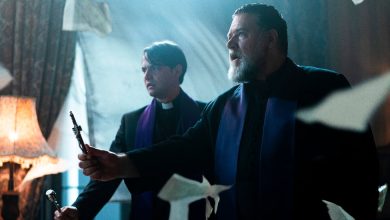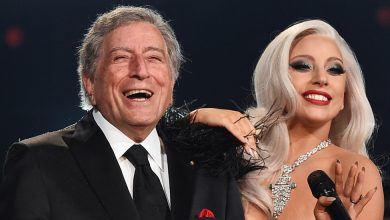Curious About ‘Moon Knight’? Here’s What You Need to Know.

If you’re a connoisseur of superhero comics, you probably know Moon Knight, the supernaturally empowered, mentally unstable vigilante played by Oscar Isaac in the new Disney+ Marvel mini-series that bears the character’s name, debuting Wednesday. But if you’re more of a casual fan, you may have missed out on this very strange superhero, even though he’s been fighting crime — and his inner demons — since the 1970s.
According to the “Moon Knight” TV series’s showrunner, Jeremy Slater, the general audience’s lack of familiarity with the character was an advantage, allowing the show’s creative team to “cherry pick the coolest elements” from nearly 50 years of comics and then experiment with the rest.
“If you’re doing a Spider-Man movie, the fans know there has to be a Peter Parker,” Slater said. “But we really had a lot of latitude with Moon Knight.”
So who is Moon Knight? And what kinds of surprises lie in store for longtime fans? In recent video calls, we spoke with Slater and a “Moon Knight” executive producer, Grant Curtis, about the choices they made and about the history of one of Marvel Comics’s most unusual creations. Here’s what to know ahead of the premiere.
The Origins
Moon Knight emerged from a comic book era that fans refer to as the Bronze Age, when a new wave of writers and artists who had grown up as science-fiction, fantasy and superhero fans began introducing more mature themes and story lines to the medium. Created by the writer Doug Moench and the artist Don Perlin, Moon Knight debuted in a 1975 issue of the horror-adventure comic Werewolf by Night as a mercenary out to capture the series’s title monster. With his white mask, white hood and long white cape, the character cut such a striking figure that other Marvel writers and artists soon started dropping him into their stories.
That classic all-white look has survived for the TV version. “Anytime a character is getting turned into Legos and Funkos, there are going to be a lot of people weighing in,” Slater said. “But right from the beginning, we stressed that there were some things about the character we thought were defining visual elements, and one was his glowing white eyes.”
In 1980, Moench and the artist Bill Sienkiewicz introduced a solo Moon Knight comic, on which they collaborated until 1983. They fleshed out the origin story, establishing a lot of the lore that has survived through decades of reboots and retcons. In their version, a soldier of fortune named Marc Spector is killed on a mission in North Africa but revived by the spirit of the Egyptian moon god Khonshu (voiced by F. Murray Abraham on TV). He becomes an agent of justice, operating in and around New York City under different aliases: as the mercenary Spector; as a man named Steven Grant, who invests Spector’s money and becomes a billionaire; and as the cabdriver Jake Lockley. For later versions of the character, other writers gave him dissociative identity disorder, and the aliases became separate personalities.
Explore the Marvel Cinematic Universe
The popular franchise of superhero films and television series continues to expand.
- ‘Spider-Man: No Way Home’: The web slinger is back with the latest installment of the “Spider-Man” series.
- ‘Hawkeye’: Jeremy Renner returns to the role of Clint Barton, the wisecracking marksman of the Avengers, in the Disney+ mini-series.
- ‘Shang-Chi and the Legend of the Ten Rings’: The superhero originated in comics filled with racist stereotypes. The movie knocked them down.
- ‘Eternals’: The two-and-a-half-hour epic introduces nearly a dozen new characters, hopping back and forth through time.
In Disney’s “Moon Knight,” Isaac begins as Steven Grant, who is not a billionaire but rather a meek gift shop employee at a British museum. He also has frequent blackouts. By the end of the first episode, he begins to understand that whenever he is unconscious, his body is being inhabited by the troubled mercenary Marc Spector.
Curtis said that maintaining the “fallibility” of Moon Knight was essential. The hero’s struggles felt very “adult” in the Moench and Sienkiewicz comics, Curtis said, which made them all the more appealing to 1980s teenagers.
The Peripherals
The early Moon Knight stories introduced a cast of characters who in the many different iterations have generally stuck around. The hero is often assisted by the skilled pilot and aide Jean-Paul DuChamp, also known as Frenchie, and by Marlene Alraune, a globe-hopping adventurer (and the hero’s occasional girlfriend). He also gets help from Bertrand Crawley, an erudite and philosophical homeless man, and Gena Landers, a diner proprietor whose two teenage sons also pitch in on some missions.
Slater and Curtis were tight-lipped about which of this crew — if any — will appear on the show, though Curtis did say, “We have a few surprises in there for the fans, down to the very last frame.”
The Moench and Sienkiewicz run on Moon Knight was notable for its noir-influenced visual style and tone, thick with long shadows and moral ambiguity. The comics’ stories were akin to what other creative teams were doing with Marvel’s Daredevil and the Punisher in the ’80s: All featured gritty, martial arts-heavy action, set largely at night, in the worlds of international crime cartels and dangerous cults.
The villain in the “Moon Knight” series is a cult leader, Arthur Harrow, played by Ethan Hawke. Harrow is a soft-spoken visionary who follows a different Egyptian deity from Khonshu, and he thinks some of Spector’s ancient artifacts could be used to transform the world for the better. “He’s a foil that’s very similar to Marc Spector,” Curtis said. “You never really know who to root for and who to root against.”
The Batman Question
So … a billionaire vigilante who wears a long cape, protects the city streets and has an assortment of sidekicks and assistants? That’s Batman, right?
The criticism that Moon Knight is little more than a Marvel spin on Batman (a DC Comics creation) has persisted since the Moench and Sienkiewicz days. That’s partly why Slater said he leaned away from that side of the character in his pitch to Marvel.
“We can’t do Moon Knight as just another costumed vigilante beating up muggers in an alley,” he said. “The market is saturated by that. Like, there’s a new Batman film in theaters right now. So I looked back to my childhood and the things that made me fall in love with movies, like ‘Raiders of the Lost Ark’ and ‘Ghostbusters.’”
Slater said that the Marvel Studios president, Kevin Feige, asked him to play up the character’s ties to Egyptology. To help get that right, they hired the Egyptian action filmmaker Mohamed Diab to direct four episodes. (The other two are directed by the indie horror duo Justin Benson and Aaron Moorhead because, according to Curtis, “Nobody does ‘bump in the night’ better.”)
The producers also worked with mental health experts to make sure they were sensitive to one of the other major traits that separates Moon Knight from Batman and other heroes: his struggles with dissociative identity disorder. Because of his several aliases, the character was mislabeled in some of the older comics as having schizophrenia — back when pop culture often conflated that condition with having multiple personalities — but more recent revivals of the character have tried to be more accurate.
Slater said the ultimate aim with his “Moon Knight” was to make something that established the character as uniquely edgy and complex, much as Moon Knight has always been in the Marvel Comics universe.
“Millions of people are going to watch this,” Slater said. “You may only get one shot to work on something like that. So our approach in the writers’ room was to push the boundaries of how weird we can make it.”





